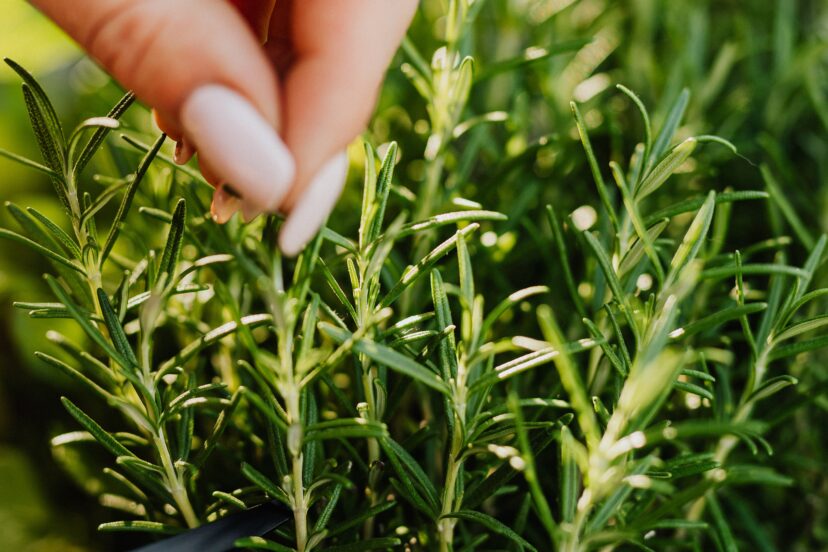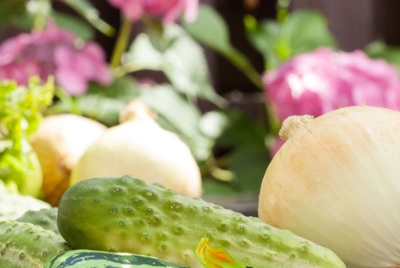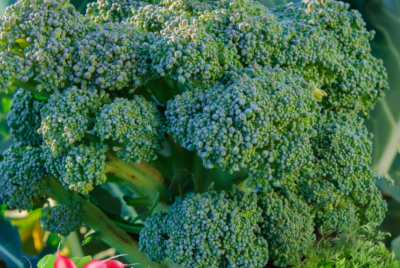Companion Plants for Rosemary

The Best Companion Plants for Rosemary
Discover the best companion plants for rosemary and learn how to maximize crop yields and maintain a healthy, pest-free garden through the traditional gardening technique of companion planting.
Overview of Companion Planting
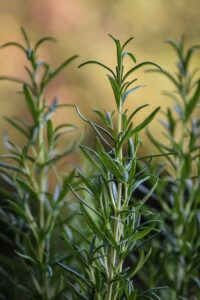
Companion planting is a traditional gardening technique that I find incredibly fascinating. It involves planting different types of plants together to benefit one another, which may seem like a simple idea but has a multitude of benefits for gardeners and the plants themselves. By strategically pairing plants with similar growing requirements, gardeners can create a harmonious environment that encourages optimal growth and overall health.
Benefits of Companion Planting
One of the key benefits of companion planting is the mutual protection plants provide for each other against pests and diseases. For example, planting rosemary alongside sage can help deter pests that may affect either plant when grown alone. This not only reduces the need for chemical pesticides but also contributes to a more balanced and eco-friendly garden ecosystem.
Additionally, companion planting often leads to improved growth and yield, thanks to the synergistic relationships plants can have when grown together. For instance, when beans are planted with rosemary, the beans can help enhance the nitrogen levels in the soil, benefiting the rosemary plant. Furthermore, companion planting can also result in space savings, allowing gardeners to make the most of their available garden space by utilizing it more efficiently.
In my experience, understanding the concept of companion planting has not only enhanced the overall health and productivity of my garden but has also deepened my appreciation for the intricate relationships that exist between different plant species.
It’s truly a wonderful way to create a thriving and balanced garden ecosystem. [1]
Understanding Companion Planting

Companion planting is a traditional gardening technique where plants with similar growing requirements are strategically planted together to benefit one another.
This practice offers a range of advantages, including improved growth, fewer pests, and space savings.

For instance, when rosemary is paired with companion plants like chives or sage, it can help deter pests that are likely to attack these plants, such as carrot flies or cabbage moths.
In return, these companions can also protect rosemary from pests that may affect its growth, creating a harmonious and mutually beneficial environment of companion planting.

Companion Planting leads to Improved Soil Health
Furthermore, companion planting can also lead to improved soil health. Certain plants have the ability to fix nitrogen in the soil, which can benefit neighboring plants by providing them with essential nutrients.
Enhancing Soil Fertility
For example, planting rosemary alongside beans can enhance the soil’s fertility, promoting healthier growth for both plants. This not only maximizes the overall productivity of the garden but also minimizes the need for synthetic fertilizers, contributing to a more sustainable and eco-friendly approach to gardening.
Harnessing the Symbiosis of Plants
In essence, understanding the dynamics of companion planting allows gardeners to harness the natural symbiosis between plants, creating a thriving and balanced ecosystem in their garden.
Environmentally Friendly Approach to Gardening
By strategically selecting companion plants, gardeners can optimize the health and productivity of their crops while minimizing the reliance on chemical interventions, making it a rewarding and environmentally friendly approach to gardening.
Best Companion Plants for Rosemary

Consider Growing Conditions Between Plants
When it comes to selecting companion plants for rosemary, it’s crucial to consider the growing conditions and the symbiotic relationship between the plants. Plants such as lavender, marigolds, and sage are known to be excellent companions for rosemary.
For instance, lavender and rosemary both thrive in similar well-drained, slightly alkaline soil and sunny conditions. In addition to creating a visually appealing garden, planting these companion plants together can benefit the overall health of the garden by repelling pests and attracting beneficial insects.
Another great companion for rosemary is sage. Both rosemary and sage belong to the mint family and have similar soil and sunlight requirements. By planting these herbs together, they can provide mutual protection from pests and diseases, while also enhancing the flavor of neighboring vegetables and fruits. This exemplifies the concept of companion planting, where plants are strategically placed to support each other’s growth and well-being.
Moreover, when considering the benefits of companion planting, it’s important to note that pairing rosemary with compatible companions can not only contribute to the health and vigor of the rosemary plant but also enhance the flavors and aromas of neighboring plants. For instance, the aromatic qualities of lavender and sage can complement the flavor of vegetables such as carrots and beans, creating a harmonious and thriving garden ecosystem.
Plants to Avoid Near Rosemary
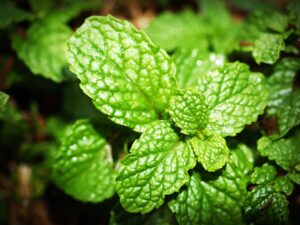
When considering companion plants for rosemary, it’s important to be mindful of which plants may not complement its growth. For instance, mint, with its invasive root system, can compete with rosemary for nutrients and overtake its space, leading to stunted growth for the rosemary. Additionally, basil is known to attract pests that may also affect rosemary, making it an unsuitable companion. Furthermore, pumpkins, tomatoes, and cucumbers all have high water and nutrient requirements, which may cause an imbalance in the soil conditions, affecting the overall health of the rosemary plant.
In the case of pumpkins, their sprawling vines can overshadow the rosemary, depriving it of essential sunlight. Similarly, cucumbers and tomatoes, with their sprawling nature, can encroach on the space of the rosemary, leading to reduced air circulation and potential disease susceptibility. Understanding the specific growth habits and resource needs of these plants is crucial in making informed decisions about which companions to avoid near rosemary. By doing so, gardeners can ensure that their rosemary plants have the best chance of thriving and contributing to a healthy garden ecosystem.
Maximizing Crop Yields and Garden Health
Companion planting rosemary offers a plethora of benefits, and one of the significant advantages is the maximization of crop yields and the creation of a healthy, pest-free garden. When considering companion plants for rosemary, it’s vital to select those with similar needs and attributes that complement each other. For instance, planting rosemary alongside companion plants such as lavender, sage, and marigolds can significantly enhance the overall health and productivity of the garden. Lavender, with its beautiful fragrance and ability to attract pollinators, not only complements the growth habit of rosemary but also aids in pest control, ultimately contributing to increased crop yields.
In addition to maximizing crop yields, the practice of companion planting also fosters a healthy garden environment. For example, planting rosemary with companions like chives and strawberries can act as a natural pest deterrent, protecting the garden from harmful insects and pests. Chives, with their pungent aroma, repel pests such as aphids and Japanese beetles, safeguarding the rosemary and other plants from potential damage, thereby promoting a thriving garden ecosystem. This approach not only ensures the well-being of the rosemary plant but also benefits the overall health and vitality of the garden, creating a harmonious and sustainable growing environment.
Planting and Caring for Rosemary and Companion Plants
When it comes to planting and caring for rosemary and its companion plants, it’s important to pay attention to the specific growing conditions that will support their optimal development. For instance, rosemary thrives in well-draining soil with minimal nutrients, making it an ideal choice for sunny locations with plenty of direct sunlight. This means that when choosing companion plants, it’s beneficial to select those that share similar soil and sunlight requirements. For example, lavender, a well-known companion plant for rosemary, also prefers well-draining soil and ample sunlight, making it an excellent match for rosemary in a companion planting arrangement.
In addition to soil and sunlight, proper watering practices are essential for the health of rosemary and its companions. Overwatering can lead to root rot, which affects the overall well-being of the plants. Therefore, it’s crucial to water rosemary and its companion plants conservatively, allowing the soil to dry out between waterings. This careful approach to watering will help create an environment that benefits the growth of both rosemary and its companion plants. Furthermore, to prevent rosemary from taking up excessive space, regular pruning is recommended. Pruning not only controls the size of the rosemary plant but also promotes bushier growth, enhancing its aesthetic appeal and overall health.
By understanding the specific needs of rosemary and its companion plants, gardeners can create a cohesive and thriving garden that maximizes the benefits of companion planting. From selecting suitable growing conditions to implementing effective care practices, the successful cultivation of rosemary and its companion plants relies on a thoughtful and attentive approach to gardening.

